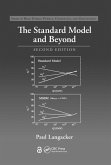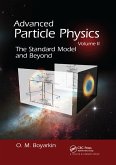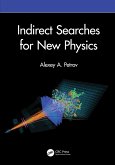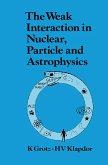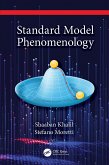When Kai Zuber's pioneering text on neutrinos was published in 2003, the author correctly predicted that the field would see tremendous growth in the immediate future. In that book, Professor Zuber provided a comprehensive self-contained examination of neutrinos, covering their research history and theory, as well as their application to particle physics, astrophysics, nuclear physics, and the broad reach of cosmology; but now to be truly comprehensive and accurate, the field's seminal reference needs to be revised and expanded to include the latest research, conclusions, and implications.
Revised as needed to be equal to the research of today, Neutrino Physics, Third Edition delves into neutrino cross-sections, mass measurements, double beta decay, solar neutrinos, neutrinos from supernovae, and high-energy neutrinos, as well as entirely new experimental results in the context of theoretical models.
Written to be accessible to graduate students and readers from diverse backgrounds, this edition, like the first, provides both an introduction to the field as well as the information needed by those looking to make their own contributions to it. And like the second edition, it whets the researcher's appetite, going beyond certainty to pose those questions that still need answers.
Features
Presents the only single-author comprehensive text on neutrino physicsIncludes experimental and theoretical particle physics and examines solar neutrinos and astroparticle implicationsOffers details on new developments and recent experiments
Revised as needed to be equal to the research of today, Neutrino Physics, Third Edition delves into neutrino cross-sections, mass measurements, double beta decay, solar neutrinos, neutrinos from supernovae, and high-energy neutrinos, as well as entirely new experimental results in the context of theoretical models.
Written to be accessible to graduate students and readers from diverse backgrounds, this edition, like the first, provides both an introduction to the field as well as the information needed by those looking to make their own contributions to it. And like the second edition, it whets the researcher's appetite, going beyond certainty to pose those questions that still need answers.
Features
Presents the only single-author comprehensive text on neutrino physicsIncludes experimental and theoretical particle physics and examines solar neutrinos and astroparticle implicationsOffers details on new developments and recent experiments
Praise for the previous editions:
"...highly recommended to anyone interested in this field, and to any advanced student...who needs to understand neutrino physics."
- Klaus Blaum, CERN Courier
"...extremely comprehensive and up-to-date...an excellent introduction to this exciting field...a handy reference source for the experts."
- Alan Watson, University of Leeds
"...an excellent, up-to-date, and thorough introduction to the subject for new researchers in the field...a valuable and handy reference for the more experienced scientist."
- Dan Hooper, E-streams
"...highly recommended to anyone interested in this field, and to any advanced student...who needs to understand neutrino physics."
- Klaus Blaum, CERN Courier
"...extremely comprehensive and up-to-date...an excellent introduction to this exciting field...a handy reference source for the experts."
- Alan Watson, University of Leeds
"...an excellent, up-to-date, and thorough introduction to the subject for new researchers in the field...a valuable and handy reference for the more experienced scientist."
- Dan Hooper, E-streams
Praise for the previous editions:
"...highly recommended to anyone interested in this field, and to any advanced student...who needs to understand neutrino physics."
- Klaus Blaum, CERN Courier
"...extremely comprehensive and up-to-date...an excellent introduction to this exciting field...a handy reference source for the experts."
- Alan Watson, University of Leeds
"...an excellent, up-to-date, and thorough introduction to the subject for new researchers in the field...a valuable and handy reference for the more experienced scientist."
- Dan Hooper, E-streams
"...highly recommended to anyone interested in this field, and to any advanced student...who needs to understand neutrino physics."
- Klaus Blaum, CERN Courier
"...extremely comprehensive and up-to-date...an excellent introduction to this exciting field...a handy reference source for the experts."
- Alan Watson, University of Leeds
"...an excellent, up-to-date, and thorough introduction to the subject for new researchers in the field...a valuable and handy reference for the more experienced scientist."
- Dan Hooper, E-streams


